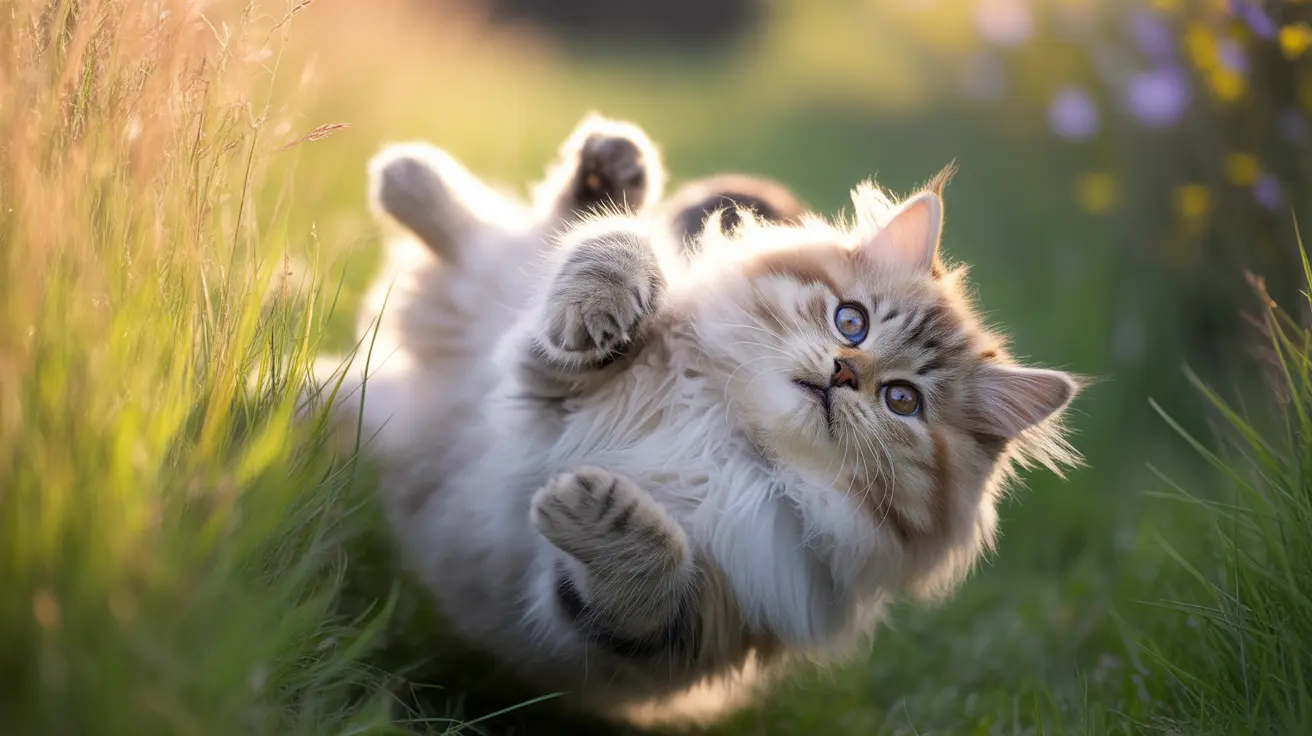The Language of Trust and Comfort
When a cat rolls on their back, they're often displaying a profound level of trust. This position leaves them vulnerable, exposing their vital organs, which is something cats would never do in the presence of potential threats. When your cat shows you their belly, they're essentially saying, "I feel safe with you."
However, this display of trust doesn't necessarily mean your cat wants belly rubs. Unlike dogs, most cats prefer to keep their sensitive belly area protected, even when showing it off.
Social Communication and Play Signals
Rolling behavior often serves as a form of social communication. Cats may roll on their backs to:
- Initiate playtime with their human companions
- Greet familiar people or other pets
- Show submission to other cats
- Express excitement or happiness
Marking Territory Through Rolling
Cats have scent glands throughout their bodies, including their faces and backs. When they roll around, they're often marking their territory, leaving their unique scent signature on surfaces. This behavior is particularly common in outdoor cats and helps establish their presence in their environment.
Physical Comfort and Self-Care
Sometimes, cats roll on their backs for purely practical reasons:
- Stretching their muscles after napping
- Scratching hard-to-reach spots
- Cooling off on hot days
- Self-grooming
The Role of Environmental Factors
Different surfaces can trigger rolling behavior. Cats might roll on:
- Cool tile floors during warm weather
- Rough carpets for a good scratch
- Grass or dirt for sensory stimulation
- Catnip-sprinkled areas for entertainment
When to Be Concerned
While rolling is typically normal behavior, excessive rolling accompanied by these signs may indicate health issues:
- Frequent scratching or skin irritation
- Visible parasites or skin problems
- Signs of pain or discomfort
- Changes in eating or bathroom habits
Frequently Asked Questions
Why does my cat roll on its back when it sees me?
When your cat rolls over upon seeing you, they're typically expressing happiness and trust. This greeting behavior shows they feel safe in your presence and may be inviting social interaction.
Is my cat rolling on its back asking for a belly rub or something else?
Usually, a cat rolling on their back is not specifically requesting belly rubs. Instead, they're showing trust and contentment. Many cats may actually react defensively if you try to touch their exposed belly, as this is a vulnerable area.
Can rolling on the back indicate health problems in cats?
While most rolling behavior is normal, excessive rolling accompanied by scratching, skin irritation, or unusual vocalizations could indicate health issues like parasites, allergies, or skin conditions. Consult a veterinarian if you notice these symptoms.
Why do outdoor cats roll in dirt or other surfaces?
Outdoor cats roll in dirt for multiple reasons: to cool off, mark territory with their scent, remove loose fur, or relieve itching. This natural behavior, known as dust bathing, serves both practical and instinctive purposes.
How can I tell if my cat's rolling is an invitation to play?
Playful rolling is usually accompanied by other signs like dilated pupils, tail twitching, playful chirping sounds, or pawing at the air. Your cat might also look at you directly and show an energetic, engaged demeanor.
Final Thoughts
Understanding why cats roll on their backs helps strengthen the bond between pets and their owners. By recognizing this behavior as a sign of trust and comfort, you can better respond to your cat's needs and communication attempts. Remember to always respect your cat's boundaries, even when they seem to be inviting interaction.






